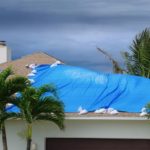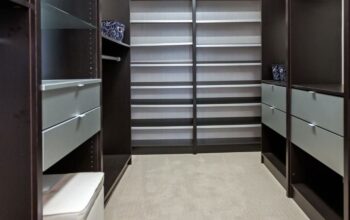When is your landlord responsible for resolving problems with damp? This question cannot be answered unless you know the exact cause of damp. Unless the cause is obvious, for example a leaking roof or holes in the external pipes, a surveyor will need to inspect the property in order to investigate matters further.
In this article we will look at different types of dampness and what steps to take if your property is suffering from the problem.
Types of Damp
Rising Damp
This happens when water travels from the ground through the brickwork of a building. As such, only the lower part of the ground floor of a property can be affected.
Your tenancy agreement includes an implied condition that the structure and exterior of your property will be kept in good repair, therefore your landlord will most likely be responsible for dealing with rising damp.
Report any such problems to your landlord as soon you notice them, ideally by email or text so you have a record of the reporting.
Penetrating Dampness
Here, there will be horizontal moisture ingress through the walls from outside to inside. Causes include: leaks or holes in the roof, leaks in gutters or external pipes or windows and doors that are rotten or don’t close fully.
As with rising damp, your landlord will most likely have to repair the problems because of the implied conditions within your tenancy agreement. Again, report any such problems as soon as possible. If your landlord is not aware of the problems, they will not know that they need to carry out repairs.
Construction Damp
This is caused by a defect in the design of the property and does not generally fall into the category of housing disrepair. However, where the design defect has caused problems with the structure and exterior of the property, for example damaged flooring, your landlord may be responsible for repairing the same. Report any such issues often and regularly.
Condensation Dampness
Condensation occurs when moisture can’t escape from the inside of the property and collects as water droplets on cold surfaces, such as walls or windows. Your landlord may be responsible for resolving issues caused by condensation if your tenancy agreement states that the property will be kept ‘in good condition’ or ‘fit to live in’. Again, report these problems to your landlord as soon as they become apparent.
What to do if you find Damp
Report it
As detailed above, reporting damp is vital. Notify your landlord of the problems as soon and as often as you can. It is advised that you either text or email your landlord, so there is a record of your complaint. If you make telephone calls to the landlord, make a note of the date and time of the call and the name of the person you spoke to.
Making a Formal Complaint
If your landlord does not respond to reports, check your tenancy agreement for their complaints procedure. Follow it carefully, concluding with a complaint to the housing Ombudsman if necessary.
Instructing Solicitors
If your landlord does not respond at all, you may consider instructing a housing solicitor who will pursue a claim on your behalf. Initially, they will attempt to arrange repairs and seek compensation with the landlord. However, if negotiations break down, court action can be taken.
This article was supplied by Aticus Law – expert housing disrepair solicitors in Manchester and London.
Related Posts

Loves home. I am here to provide how to make your home a much better place. 🙂 Blogging about HomeDecor, Home Improvements and more.












I love how in-depth this article goes in to explaining dampness. Would you agree that by doing some additional upgrades to the home such as in your home improvement tips, that one will be able to successfully have a better, cleaner home?
https://www.worthview.com/update-kitchen-countertops/comment-page-1/#comment-37078